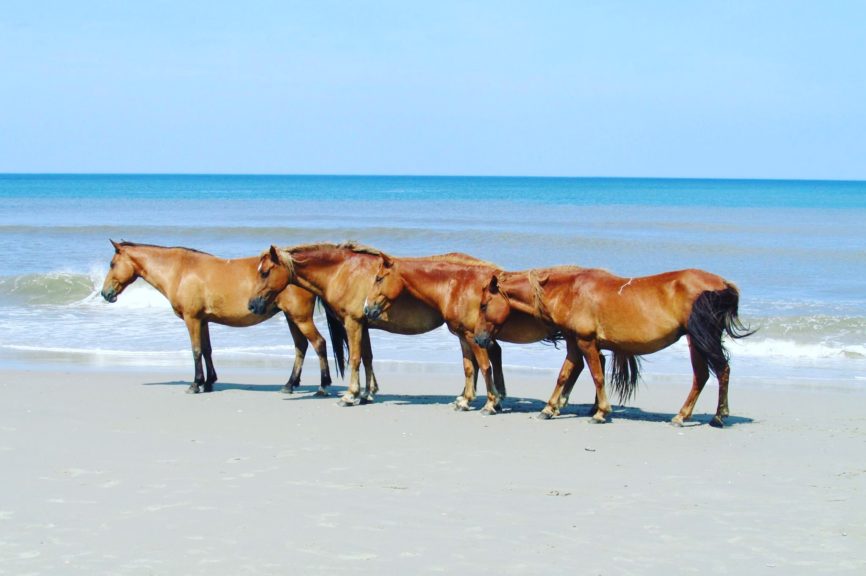One of the more remarkable experiences on the Outer Banks is seeing the Corolla Wild Horses wandering along the beach or grazing in the dunes that line the shore.
They are beautiful; they look peaceful, and for many people, there is a temptation to get as close to the horses as possible. Some even walk right up to them.
A piece of advice on that—please don’t!
There are a couple of reasons for this.
First, Currituck County has a law on its books requiring people to stay a minimum of 50’ away from the horses. If Currituck County sheriffs see anyone closer than 50’ from the horses, they will issue a citation.
More significantly, think of it as preservation…self-preservation for yourself and preservation for one of the last remaining links to the Spanish Mustangs of the Conquistadores.
There are some important thing to realize about the Corolla Wild Horse herd:
Primarily they are wild horses. There may be a debate about whether they are feral—(meaning introduced not the environment) or if, after 400 years or so, they have become part of the natural environment of the Currituck Banks. That’s a discussion for naturalists, biologists, and other scientists.

But for the purposes of understanding their behavior, these are wild horses. And wild horses are not necessarily gentle creatures.
They are not wantonly cruel or vicious, but they are not simply a sweet-tempered, bucolic animal grazing peacefully in a field.
That is especially true if a stallion is looking to create a harem of his own, and he feels the best opportunity is the harem of another stallion.
Typically a stallion will have three or four mares that he has gathered into what is called a harem. Those are the mares that he is going to mate with when the time is right. The stallion shepherds his mares from place to place and offers them protection—although there are not many predators on the Outer Banks that would concern a 700-pound horse.
Not all stallions have a harem and from time to time, an unattached stallion will decide he is going to challenge for the mares.
Things can get pretty lively at that point.

It may begin with the unattached stallion getting as close as possible to the harem. Typically he will be chased away by the other male. That process can go on for some time, but eventually, there will probably be a fight for dominance.
It’s rare for a fight to end in the death of either of the combatants, but the battle is furious and violent…and the fur and flanks of the males have the scars to prove that.
During the process of deciding who is going to get the harem, the stallions are not concerned at all about humans. They may be considered small horses, but 700 pounds running at 25 miles per hour is going to create a very painful collision.
There are other issues involved as well. It is very important that the horses not become accustomed to human contact. What a horse considers a gentle nudge is a powerful force to a human.
There is also a concern about people feeding the horses. Although the herd may look mangy and ill-fed, in fact, they are quite healthy, and for the most part, human food is not good for them.
There have been instances when people have fed the horses and the animal has become ill and in at least one case, a colt died because it was fed a watermelon with the rind. Corolla Wild Horse Fund monitors the health of the herd carefully, and sick or weak horses are removed and taken for veterinary care. Once removed from the herd, they cannot be reintroduced.
So…enjoy the horses. They are magnificent, but 50’ is plenty close enough to get a picture and a good buffer for the safety of people and the horses.
